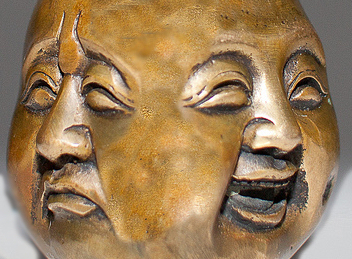Investing in the Stock Market
The ability to predict stock market movements is one of the most sought-after skills on Wall Street. Yet research indicates that there are simpler ways to consistently use publicly-available information to improve future stock market and Investing performance.
Mood Swings

See: Socionomics: The Science of History and Social Prediction
Templeton’s warning was issued long before the Internet made mood-monitoring more real-time. Research suggests that sentiment expressed on blogs and in social media may actually be a very accurate predictor of market gyrations. In 2010, Eric Gilbert and Karrie Karahalios of the University of Illinois at Urbana-Champaign published the results of their study of expressions of uncertainty on the blogging platform LiveJournal, and their correlations with stock market movements1. Gilbert and Karahalios surveyed over 20 million LiveJournal posts in 2008 and created an “Anxiety Index” which measured usage of words related to fear, worry, and uncertainty. They found that the Anxiety Index consistently would rise two days before a market dip. More Articles on Socionomics
Can Tweets Help You Beat the Street?
For at least one group of researchers, at the University of California, Riverside, the answer is yes. The research team found2 that more concurrent discussions about a publicly-traded company on Twitter meant that its stock price was likely to rise, and vice-versa. Deploying a trading strategy based on this model, the team was able to handily outperform the Dow Jones Industrial Average.
A 2010 study3 by Peter Gloor of MIT, like the LiveJournal study above, tracked Twitter usage of terms related to positive or negative uncertainty, like “hope”, “fear” and “worry.” Gloor’s research suggests that mood spikes in either direction (positive or negative) on Twitter precede falling markets. If John Templeton were alive today he might tweet something like: “@johnnytemp Hey tweeps if u see pos or neg spikes in twitter mood SELL SELL SELL!!! #MarketPrediction.”
Super February
Mark Twain once wrote: “October: This is one of the peculiarly dangerous months to speculate in stocks. The others are July, January, September, April, November, May, March, June, December, August, and February.” Twain might have omitted February had he lived in today’s era. That’s because the Super Bowl – the annual National Football League championship game, now annually held in February – has had an uncanny ability to predict the direction of the stock market.
According to urban legend, if a team from the original National Football League wins the Super Bowl, the market will subsequently rise, while if a team from the former American Football League wins, the market will fall. A study conducted in 2008 by Washington and Lee University’s George Kester found4 that an investment strategy based on this rule would have been correct 80% of the time and would have strongly outperformed a conservative investment approach.
Watch Your Step
Note that there is certainly no way to predict the future of anything, let alone the stock market, with any certainty. The studies above suggest unconventional and fascinating connections between real-world activity and the stock market, but before investing in any stock or strategy, make sure you are fully informed and aware of the risks.
Resources:
(1) http://comp.social.gatech.edu/papers/icwsm10.worry.gilbert.pdf
(2) http://ucrtoday.ucr.edu/4158
(3) http://www.ickn.org/documents/COINs2010_Twitter4.pdf
(4) https://www.businessnewsdaily.com/1992-sb-economic-prediction.html
Photo Credits: Source Photo By mabahamo Edited by T. McMahon
